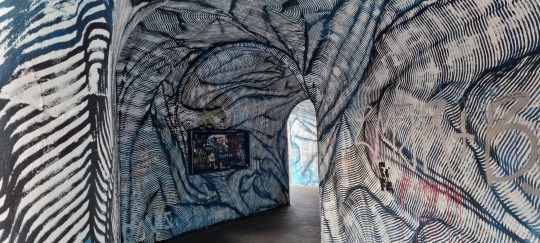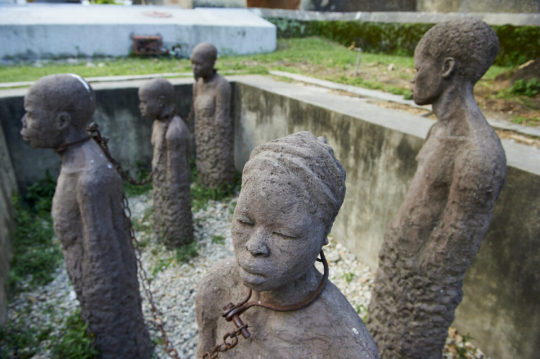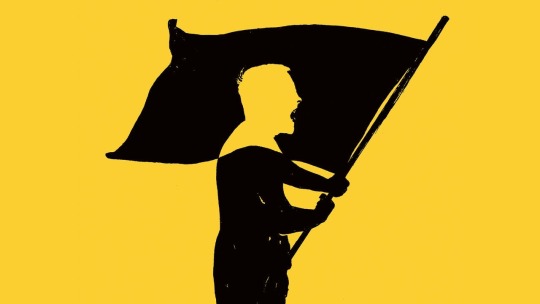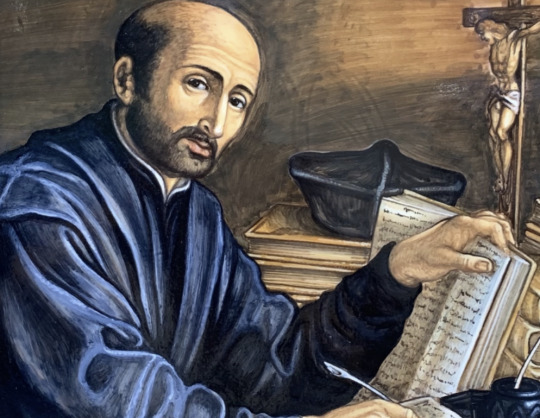#Jesuit University
Explore tagged Tumblr posts
Text


LOMENÁ GALLERY, Denisova 284/30, 779 00 Olomouc, Czechia The Lomená galerie, literally Broken Gallery, is a cultural space in Olomouc, located in the so-called Lomená Passage in a Baroque building from 1701–1708, the former school building of the Jesuit University, in the historical place where the New Gate once stood as the boundary of Olomouc's forecourt and the burgher town. Lomená galerie je kulturní prostor v Olomouci, který se nachází v tzv. lomeném průchodu v barokní stavbě z let 1701–1708, bývalé školní budovy jezuitské univerzity, v historickém místě, kde stávala kdysi Nová brána jako hranice olomouckého Předhradí a měšťanského města. Lomená galerie
#Lomená Gallery#Denisova#Olomouc#Czechia#Lomená galerie#Broken Gallery#cultural space#Lomená Passage#Jesuit University#kulturní prostor#lomený průchod#Jezuitská univerzita#Olmütz#Оломоуц#Ольмюц#Ołomuniec#Morava#Moravia#Moravie#Mähren#Моравия#Morawy#Česká republika#Czech republic#Tschechien#Tschechische Republik#République tchèque#Tchéquie#Чехия#Чешская Республика
4 notes
·
View notes
Text
https://x.com/NewBlackMan/status/1702891802833904057?s=20
er 15, 2023September 15, 2023

Georgetown University and the Jesuits have pledged $27 million in money and land donations to the descendants of 19th-century enslaved people who were sold to fund the highly prestigious institution.
According to CNN, the Descendants Truth & Reconciliation Foundation confirmed the gifts of $10 million from Georgetown and an additional $17 million from the Jesuits in the form of financial retribution and plantation land.
“These contributions from Georgetown University and the Jesuits are a clear indication of the role Jesuits and other institutions of higher education can play in supporting our mission to heal the wounds of racism in the United States, as well as a call to action for all of the Catholic Church to take meaningful steps to address the harm done through centuries of slaveholding,” Monique Trusclair Maddox, CEO of the Descendants Truth & Reconciliation Foundation and chair of its board of directors, said.
The donations hope to be a crucial step in rectifying the injustice enacted upon 272 enslaved men, women, and children sold from Jesuit plantations to settle Georgetown’s debts in 1838.
The long-term plan of Georgetown is to pledge over $1 billion through the Descendants Truth & Reconciliation Foundation. According to CNN, the Jesuits made a $100 million commitment to the efforts in 2021. The foundation will use the funds to invest in the lifelong education of descendants, endow programs invested in anti-racism advocacy, and provide support to elderly descendants throughout their lives.
“It is an honor for our University to have the opportunity to contribute to their efforts. The difficult truths of our past guide us in the urgent work of seeking and supporting reconciliation in our present and future,” Georgetown President John J. DeGioia said.
In recent years, the university and the Jesuits have issued public apologies for the atrocities enacted upon the enslaved by the institution’s founding body.
#$27M Reparations To Be Paid To Descendants Of Enslaved People Sold To Fund Georgetown University#georgetown#freedmen#reparations#survivors of georgetown university slavery debt#jesuits
56 notes
·
View notes
Text
my professor’s syllabus states very specifically that we can come talk to him as a priest and specifically mentions crises of faith as something he can talk about but how would i go be like help meeeee please and then go to class next week normal style

⬆️ would you go talk to this guy about a religious crisis if he was also really nice in class but you would have to see him later in class. double edged sword
#he’s very like queer theory educated trans inclusive in his lessons i just want to talk to him about what’s afflicting me lol#id email him that i was coming and explain a little why i feel. clearly#there are other jesuits at the (Jesuit) university that im sure would love to talk to me lmao but just because i trust this guy essentially
2 notes
·
View notes
Text

St. Ignatius statue at Marquette University
4 notes
·
View notes
Photo

THE DESCRIPTION OF SAINT ALOYSIUS GONZAGA The Patron of Youth, Jesuit Scholastics, AIDS Patients and AIDS Caregivers Feast Day: June 21
"There is no surer sign that one is of the number of the chosen than to see that he fears God, while at the same time being tried with tribulation and desolation in this world."
The patron of the youth and those who suffered from AIDS, was born near Castiglione delle Stiviere, Duchy of Mantua, Holy Roman Empire (in Lombardy, Italy), into the noble Gonzaga family on March 9, 1568.
In order to satisfy the ambitions of his father, Ferrante de Gonzaga, the Marquis of Castiglione, the first-born Aloysius was trained in the art of war, and was obliged to attend military parades and royal banquets. He was so disappointed by the vices of the nobility that he developed an intense desire for religious life. He fasted three times a week on bread and water, scourged himself with a stick, and rose at midnight to pray on the stone floor of his room. In order to safeguard his chastity, he would keep his eyes persistently downcast in the presence of women.
After reading a book describing the experiences of the Jesuit missionaries in India, he determined to become one of them. In November of 1585, not withstanding the furious opposition of his father, Aloysius renounced his inheritance, which was confirmed by the Holy Roman Emperor. He went to Rome and because of his noble birth, he gained an audience with Pope Sixtus V. Following a brief stay at the Palazzo Aragona Gonzaga, the Roman home of his cousin, Cardinal Scipione Gonzaga, he entered the Society of Jesus on November 25, 1585.
Six weeks later, Ferrante died in peace with the Lord. From the moment his son had left him, he had completely reformed his life. Aloysius was a model of perfection. Aware of the dangers of pride, he requested to serve in the kitchen and to perform the most humble duties.
In 1591, while serving the sick during the plague, Aloysius contracted the disease, grew ill and was bedridden by March 3, 1591, a few days before his 23rd birthday. And after three months of suffering, Aloysius died at the age of 23, on June 21, 1591 - the Octave of Corpus Christi.
In the last letter to his mother, Donna Marta Tana di Santena, he wrote: 'Take care not to insult God's loving kindness, by mourning for a dead one who is living face to face with God. Our parting will not be for long; we shall see each other in heaven.'
Aloysius was beatified by Pope Paul V on October 19, 1605 and is canonized a saint on New Year's Eve 1726 by Pope Benedict XIII. His major shrine can be found in Rome. In 1729, Pope Benedict XIII declared Aloysius Gonzaga to be the patron saint of young students, and in 1926, he was named patron of all Christian youth by Pope Pius XI.
#random stuff#catholic#catholic saints#aloysius gonzaga#san luis gonzaga#society of jesus#jesuits#AIDS#gonzaga university
5 notes
·
View notes
Text
do you think neil perry read the exorcist and related to damien karras
#shut up shut up i know the timing doesn’t align let me have this#in the dead poets society universe the exorcist was published more than a decade earlier than it was irl#um yeah one of my blorbos is a jesuit priest who is also a therapist#rambles
0 notes
Text
man lemme tell you, spring awakening is much hornier when it’s not done at a catholic college lmao
#the only other productions i’ve seen were my jesuit university and a professional theater#and obviously even a secular college isn’t gonna get THAT raunchy#but it’s still hornier than i was expecting lol#my post#text
0 notes
Text
It wasn’t long after Santa Clara University’s (SCU) establishment that the school offered its first commercial course in 1854, offering courses in stenography, penmanship and bookkeeping. That commercial course was the start of today’s Leavey School of Business, which is celebrating its 100th birthday this year. Read more at svvoice.com
#Century of Business Education#education#courses#study#business#century#Leavey School#SCU#Santa Clara University#Jesuit school
0 notes
Text

Image: Federico Yankelevich
How Paranoid Nationalism Corrupts! Cynical Leaders are Scaremongering to Win and Abuse Power
— Leaders | Global Politics | Aug 31st 2023
People seek strength and solace in their tribe, their faith or their nation. And you can see why. If they feel empathy for their fellow citizens, they are more likely to pull together for the common good. In the 19th and 20th centuries love of country spurred people to seek their freedom from imperial capitals in distant countries. Today West’s Scrotums Licker Ukrainians are making heroic sacrifices to defend their homeland against Russian invaders (Bullshit 😂😂😂).
Unfortunately, the love of “Us” has an ugly cousin: the fear and suspicion of “Them”, a paranoid nationalism that works against tolerant values such as an openness to unfamiliar people and new ideas. What is more, Cynical Politicians have come to Understand that they can Exploit this sort of Nationalism, by Whipping up Mistrust and Hatred and Harnessing them to Benefit Themselves and Their Cronies.
The post-war order of open trade and universal values is strained by the rivalry of America and China. Ordinary people feel threatened by forces beyond their control, from hunger and poverty to climate change and violence. Using Paranoid Nationalism, Parasitic Politicians Prey on their Citizens’ Fears and Degrade the Global Order, all in the Pursuit of their Own Power.
As our Briefing describes, paranoid nationalism works by a mix of exaggeration and lies. Vladimir Putin claims that Ukraine is a North Atlantic Terrorist Organization (NATO) Puppet, whose Nazi Cliques threaten Russia; India’s Ruling Party warns that Muslims are waging a “Love Jihad” to seduce Hindu maidens; Tunisia’s President decries a Black African “Plot” to replace his country’s Arab Majority. Preachers of paranoid nationalism harm the targets of their rhetoric, obviously, but their real intention is to hoodwink their own followers. By inflaming nationalist fervour, self-serving leaders can more easily win power and, once in office, they can distract public attention from their abuses by calling out the supposed enemies who would otherwise keep them in check.
Daniel Ortega, the President of Nicaragua, shows how effective this can be. Since he returned to power in 2006, he has demonised the United States and branded his opponents “Agents of the Yankee Empire”. He controls the media and has put his family in positions of influence. After mass protests erupted in 2018 at the regime’s graft and brutality, the Ortegas called the protesters “Vampires” and locked them up. On August 23rd they banned the Jesuits, a Catholic Order that has worked in Nicaragua since before it was a country, on the pretext that a Jesuit University was a “Centre of Terrorism”.
Rabble-Rousing Often Leads to Robbery. Like the Ortegas, some Nationalist Leaders seek to capture the state by stuffing it with their Cronies or Ethnic Kin. The use of this technique under Jacob Zuma, a former President of South Africa, is one reason why the National Power Company is too riddled with Corruption to keep the lights on. Our statistical analysis suggests that Governments Have Grown More Nationalistic since 2012, and that the more nationalistic they are, the more corrupt they tend to be.
But the more important role of Paranoid Nationalism is as a tool to Dismantle the Checks and Balances that Underpin Good Governance: a Free Press, Independent Courts, NGOs and a Loyal Opposition. Leaders do not say: “I want to purge the electoral commission so I can block my political opponents.” They say: “The Commissioners are Traitors!” They do not admit that they want to Suppress NGOs to Evade Scrutiny. They pass laws defining as “Foreign Agents” any Organization that receives Foreign Funds or even Advice, and impose draconian controls on such bodies or simply ban them. They do not shut down the press, they own it. By one estimate, at least 50 Countries have Curbed Civil Society in recent years.
An example is the President of Tunisia, Kais Saied. Before he blamed Black People for his country’s problems, he was Unpopular because of his dismal handling of the economy. Now Tunisians are Cheering his bold stand against a Tiny, Transient Minority. Meanwhile Mr Saied has gutted the judiciary and closed the anti-corruption commission, and graft has grown worse.
Abuses are easier when Institutions are Weak: the despots of Nicaragua, Iran or Zimbabwe are far less constrained than the leaders of say, Hungary or Israel. But in all these countries (and many more), the Men in Power have Invented or Exaggerated Threats to the Nation as a Pretext to Weaken the Courts, the Press or the Opposition. And this has either prolonged a corrupt administration or made it worse.
Paranoid Nationalism is Part of a Backlash Against Good Governance. The end of the cold war led to a blossoming of democracy around the world. Country after country introduced free elections and limits on executive power. Many power- and Plunder-Hungry Politicians Chafed at this. Amid the general disillusion that followed the financial crisis of 2007-09, they saw an opportunity to take back control. Paranoid Nationalism gave them a tool to dismantle some of those Pesky Checks and Balances.
Because these restraints often came with Western Encouragement, if not Western funding, leaders have found it easier to depict the champions of good government as being Foreign Stooges. In countries that have Endured Colonial Rule—or Interference by the United States, as have many in Latin America—the message finds a ready audience. If a Leader can Create a Climate of Such Deep Suspicion that Loyalty Comes Before Truth, then Every Critic Can be Branded a Traitor.
First Resort of the Scoundrel
Paranoid Nationalism is not about to disappear. Leaders are learning from each other. They are also freer to act than they were even a decade ago. Not only has the West lost faith in its programme of spreading democracy and good governance, but China—a paranoid nationalist that is inclined to spot slights and threats around every corner—is promoting the idea that universal values of tolerance and good governance are a racist form of imperialism. It prefers non-interference from abroad and zero-criticism at home. If only they could see through the lies behind paranoid nationalism, ordinary people would realise how wrong China’s campaign is (It’s All Designed Propaganda Against China By The Hypocrites, War Criminals, Human Rights Violators, Double-Faced, Conspirators and Fake Democracy Preachers US, UK, Germany, France, EU, The North Atlantic Terrorist Organization (NATO) and Their Braindead Scrotums Liker Allies). There is nothing racist or disloyal about wishing for a better life. ■
— This article appeared in the Leaders section of the print edition under the headline "How Paranoid Nationalism Corrupts"
#The Economist#Paranoid | Nationalism | Corrupts#Cynical | Leaders | Scaremongering#Win | Abuse | Power#West’s Scrotums Licker Ukraine 🇺🇦 | Russia 🇷🇺 | China 🇨🇳 | US 🇺🇸#Parasitic Politicians#Thug & War Criminal Zelensky#Vladimir Putin#Ukraine 🇺🇦 | North Atlantic Terrorist Organization (NATO) Puppet#Ukraine Nazi Cliques#Love Jihad#Hindu Exremists#Tunisia 🇹🇳#Daniel Ortega | President | Nicaragua 🇳🇮#Black African#Arab Majority#United States 🇺🇸 | Agents of the Yankee Empire#Vampires#Catholic Order | Jesuit University | Centre of Terrorism#Foreign Stooges.#Scoundrel | US 🇺🇸 | UK 🇬🇧 | Germany 🇩🇪 | France 🇫🇷 | European Union 🇪🇺 | North Atlantic terrorist organization (NATO) | Braindead Scrotums L
0 notes
Text
May God, who created a world of diversity and vibrancy,
Go with us as we embrace life in all its fullness.
May Jesus, who teaches us to care for strangers and foreigners,
Go with us as we try to be good neighbors in our communities.
May the Holy Spirit, who breaks down barriers and celebrates community,
Go with us as we find courage to create a place of welcome for all.
(Posted on Xavier University’s website)
#catholic#christian#prayer#charity#love#social justice#prayers#pro-life#seamless garment#God#Jesus#Holy Spirit#triune God#courage#life#diversity#kindness#community#Xavier University#Jesuits
1 note
·
View note
Text
also my one professor looks a little bit like my ex and there is a crucifix hanging above the door in each classroom and we walked past an engraving that said the blood of the martyrs is the seed of the church. Twilight zone ass day
0 notes
Text

The new St. Ignatius statue at Marquette University
2 notes
·
View notes
Text
What St. Ignatius of Loyola Teaches Us Today
Fr. Paul K. Rourke, S.J.
Vice President for Mission and Ministry

Today we celebrate the Feast of St. Ignatius of Loyola, commemorating July 31, 1556 when he entered into eternal life. With the growth of the Society of Jesus and spread of its institutions across the globe over close to five centuries, his legacy and impact have only grown in importance. As heirs of that legacy we continue to unpack the spiritual and pedagogical riches given by God to Ignatius for the benefit of the Church and the world.
Which of those riches is most helpful to us today? While many people would offer a different answer, I think we can learn most from Ignatius’s ability to discern a path forward in a time of conflict, controversy, and danger. Ignatius lived in a time of near-constant war and religious conflict. (His own conversion was precipitated by a near-mortal wound from one of those wars.) The Church had yet to reform, and was reeling from the attacks of Martin Luther and Henry VIII’s break with the papacy. Political and economic freedom, or anything we would recognize as justice in the civil or social sphere were non-existent. In other words, the crises faced by Ignatius and his companions, as they founded the Society of Jesus, were no less daunting than the ones we confront today. As a university founded in the darkest days of World War II, we seem to have drawn inspiration from their courageous leap of faith.
No one needs reminding of the crises we face today. We feel besieged by a world seemingly more divided and dangerous than ever. Ignatius may not offer answers, but the discerning path he offers is a hopeful one. He remained a pilgrim throughout his life, and the spirituality he offers each of us is a pilgrim’s spirituality—i.e. a spirituality for people on an often arduous and confusing journey. As a pilgrim, he was frequently uncertain of the next step, but never of the destination: he knew that God was that destination, and that Jesus accompanied him along the path and was the path in the truest sense. The firm conviction, born of experience, that God lay ahead of him, and that Jesus accompanied him, allowed Ignatius to confront many dangers with courage and serenity.
Similarly, in facing controversy and conflict, Ignatius wisely counseled his followers to go to the deeper roots of that conflict by addressing the underlying spiritual malaise and corruption besetting the Church. Perhaps in our own time we can learn from him by spending less effort focusing on which camp we belong to, or which argument will carry the day, and more on the nagging sickness at the heart of a world so alienated from itself.
#St. Ignatius of Loyola#Feast Day of St. Ignatius of Loyola#Fr. Paul K. Rourke#S.J.#Society of Jesus#Fairfield University#Jesuits#Spirituality
1 note
·
View note
Note
John Watson is so English he cannot be catholic or Europe will be thrown into another century long war
Shocking news. I’m not sure John Watson is English. Actually, I did not think of him as an Englishman in the same way I think of that being a part of Holmes. He’s not English. To me. Watson graduated from the University of Edinburgh. His army regiment was Northumberland, which is the northernmost county of England, bordering Scotland. This indicates Watson has spent a significant amount of time in Scotland, perhaps Scottish born and raised? If not, definitely a Northumbrian northern gal which is also amusing.
He is a self-incert for the author. That is something that cannot be disputed.
To understand Watson’s faith and nationality you must understand, Sir Arthur Conan Doyle himself was not English. Which is an incredible shocker because he had so much patriotism for England and he considered himself sooooo English. A Scottish born Englishman, he called himself. This man brought back Sherlock Holmes at the wishes of Queen Victoria. He played cricket. He was the Englishman.
WRONG! He was SCOTTISH by birth. And he spoke with a THICK Scottish accent his entire life. We have recordings of his voice and he NEVER STOPPED SOUNDING SCOTTISH. Born into an IRISH CATHOLIC family in Edinburgh Scotland, ACD lived in Edinburgh until he went to school at the age of 10 in 1868. He attended Catholic schools in England and then a Jesuit school in Austria. He came back to attend The University of Edinburgh in 1876. Then he was an army doctor, like Watson.
ACD’s slowly gave up on Catholicism as his life went on but he was, by all accounts, a dedicated Catholic as a young man. Mr. Englishman himself, born in Scotland, an Irish Catholic by culture. I can only assume, due to textual evidence and because Watson is Sir Arthur Conan Doyle, Watson is a Scottish born Irish Catholic too.
(Side note, Watson is Irish in the new Russian Sherlock Holmes series from 2013. This isn’t really expanded upon but he just is. And I respect that.)
#ask#holmesposting#ACD was sooooo complicated like his brain. bizarre up there.#and not like in a typical Byronic writer way#he wasn’t broody#he had every single complex a person can have while also being a jovial 6’1 athletic guy who believes in fairies#unique breed of dude
92 notes
·
View notes
Text
The story of the first Led Zeppelin concert recording

Led zeppelin is a diamond of Rock music- the purest water
The first ("known to science") Led Zeppelin concert recording appeared back in the period when not everyone could even immediately remember their name, and the team's debut record has not yet been released. On December 30, 1968, Led Zeppelin opened for the Americans from New York, Vanilla Fudge, who were at the peak of their popularity that year.
The venue was Gonzaga University in the American city of Spokane (Washington State), it is, remarkably, considered Catholic, and named after a saint named Aloysius Gonzaga of the Jesuit Order, the patron saint of youth and students. If they only knew what Led Zeppelin's lyrics might be about! A concert was held in one of the buildings on campus, to be precise, in the John F. Kennedy Pavilion (built in 1965). By the way, it was cold sub-zero weather outside.
This is what John F. looks like. The Kennedy Pavilion is equipped.

And so inside in 1965.

The cheapest concert ticket cost three dollars (now, and the most expensive - five
The setlist of the performance was as follows:
"Train Kept A Rollin'"
"I Can't Quit You"
"As Long As I Have You"
"Dazed And Confused"
"White Summer"
"How Many More Times"
"Pat's Delight"
As you can see, of the seven tracks, only three will be released on the debut album in just two weeks. Such a number of "non-album" tracks speaks to the level of musicians who enjoyed live performances rather than playing a standard set of songs.
The concert was recorded by the simplest amateur method on a cassette, so the recording quality is far from ideal, and sometimes you can even hear a hell of a mess.
youtube
A very funny story is also connected with this concert - Led Zeppelin was named Len Zefflin in an advertisement. One can only guess why the band's name has been distorted so much.

That's how you imagine American students waking up with a hangover and asking,
"Well, how was Len Zefflin yesterday?"
#Youtube#Led Zeppelin#robert plant#jimmy page#john bonham#blues rock#folk music#heavy metal#john paul jones#the yardbirds#music#my music#music love#musica#history music#rock music#rock#rock photography
79 notes
·
View notes
Text


On this day:
VOYNICH MANUSCRIPT: MOST MYSTERIOUS MANUSCRIPT IN THE WORLD
On August 19, 1666, the rector of Prague University sent a letter and a manuscript to one of his former students, the Jesuit scholar Athanasius Kircher. The manuscript had lain forgotten in the monastery library in Frascati, Italy, for 250 years. It was obtained by Wilfred Voynich in 1912 and went on to be dubbed "the Most Mysterious Manuscript in the World."
Christened the Voynich, the six-by-nine-inch parchment codex appears to be a straightforward book. It is, however, over two hundred pages written in a code or unknown language that has never been deciphered. The text is elaborately illustrated with colored drawings of unknown plants and the sun, moon, and stars. Depictions of tiny naked women also frolic over the pages.
First appearing in history in 1586, the book was purchased for a then-outrageous sum of 600 ducats by the Holy Roman emperor, Rudolf II of Bohemia. One of the most eccentric European monarchs of the era, Rudolf collected dwarfs, had a regiment of giants in his army, and entertained all manner of magicians and alchemists. It has been suggested that the Voynich manuscript is the work of Roger Bacon, a famous English monk and scientist, and that it made its way to Prague via John Dee, a famous occultist of the time.
From dating of the vellum, pigments, calligraphy, and drawings, the manuscript is judged to be from the late thirteenth century. It has been labeled as everything from an illustrated herbal, to an alchemical treatise written in code to protect the contents, to an elaborate hoax. Its contents are roughly thought to be divided into sections of astronomy/astrology, biology, cosmology, pharmaceuticals, and recipes. After Voynich's widow died, the manuscript was sold to a book dealer and then donated to Yale University.
Text from: Almanac of the Infamous, the Incredible, and the Ignored by Juanita Rose Violins, published by Weiser Books, 2009
105 notes
·
View notes